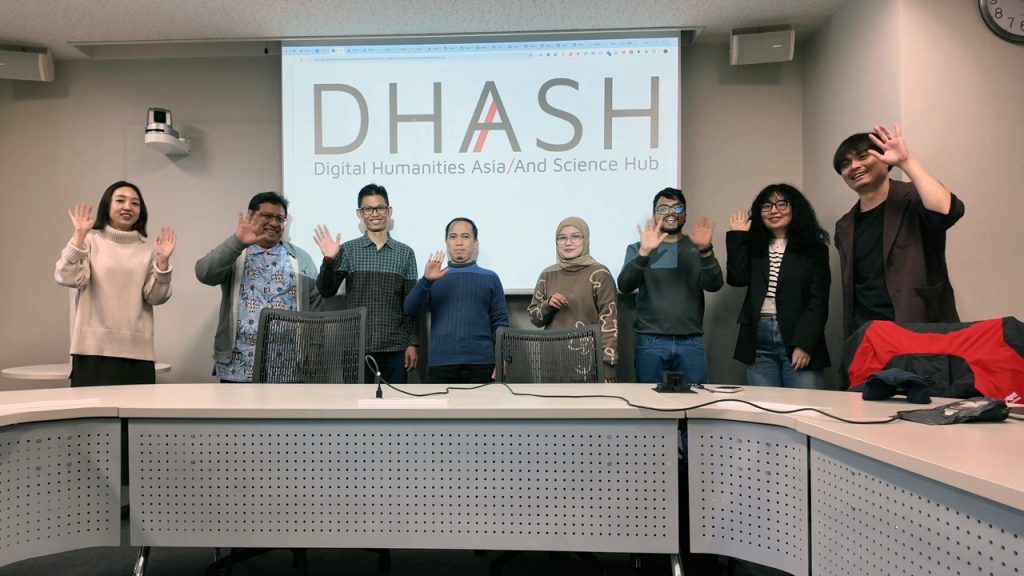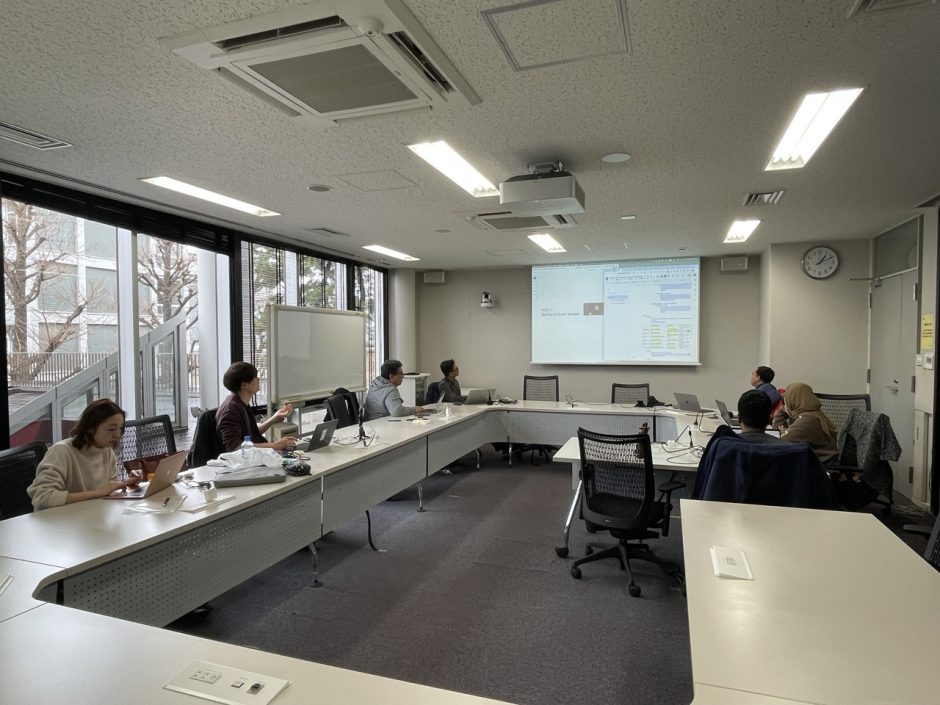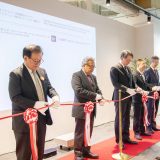The sub-project of SOI Asia called the Digital Humanities Asia/And Science Hub (DHASH) team held an in-person meeting on the 5th of March 2025 at Hiyoshi Raiosh. This was a preliminary meeting ahead of the 59th SOI Asia meeting, which occurred from the 6th to the 8th of March.
The DHASH project is a collaboration project from four universities, respectively from Universitas Syiah Kuala (USK) in Indonesia, Preserving Aceh’s Royal Legacy: A Mixed Reality Digital Archive of Aceh’s Historic Tombstones; Universitas Brawijaya (UB) in Indonesia, 3D Documentation of Malang’s Ancient Temples; Tribhuvan University (TU) in Nepal, Preserving Traditional Nepali Instruments into VST Plugins: The Sound of Sarangi and Keio University in Japan, developing interactive and informative digital archives using Voyager [1] and Omeka [2] for the mentioned cultural heritage.
The team members from Indonesia and Nepal flew into Tokyo the previous day. On the 5th, the team engaged in fruitful and productive discussions about project updates at each site, lessons learned, and future directions.
The DHASH project aims to build an Open Science Infrastructure (OSI) tailored to support the digital humanities movement within the Asia-Pacific region. This initiative goes beyond establishing reliable infrastructural services; it’s about nurturing a community-driven framework that integrates open principles into research methodology and knowledge dissemination. To build a resilient society, we are committed to making scholarly resources more accessible, thereby expanding Internet access to humanities resources, especially in the cultural heritage domains. This will help remove barriers, enabling researchers and the public to engage with the cultural heritage of the Asia-Pacific region through digital archives and exhibits.

During the meeting, each site presented their projects and provided updates on activities since the last report in December of the previous year. Members actively engaged in discussions after each presentation, sharing their challenges and solutions. After a lunch break, Dr. Goki Miyakita, the DHASH project lead, led a workshop introducing the software Voyager, which is used in creating digital archives for the project. The workshop demonstrated how to use Voyager and discussed its advantages in digital archiving.
The meeting then continued in a discussion format, where significant questions were raised: From a community perspective, what are the goals of data sharing? What are the community’s expectations? What is the most significant takeaway from engaging in and conducting this project? These questions are crucial as they help us understand the local community’s perspective and involve them more in the DHASH project, especially since digital humanities in the cultural heritage sector are deeply connected to the community. Without community engagement, there is no culture.
The initial results are promising, but it is vital for us and all project members to remember why we are doing this and the social impact and value the project brings. It’s easy to lose sight of a project’s significance when deeply involved, so focusing on our meaningful goals is crucial. This is also a reminder of our great responsibility in digitising cultural heritage: we are not just providing information but also recreating knowledge and narratives for current and future generations. While aiming to provide comprehensive information, we acknowledge that there are aspects we are still uncovering. As scholars and practitioners, we must recognise our significant responsibilities and admit that there is still much to be done. This project is just the beginning of more significant and impactful research. We, the DHASH team, are eager to see it flourish and attract many more researchers, the public, students, and scholars. We view it as a valuable opportunity for them to develop further and collaborate with us on a larger and more sustainable scale.
The meeting concluded with discussions about future plans, including the need to establish a workable schedule for conducting workshops at various sites and determining the best times for the Keio team to visit and collaborate on these workshops. It was a fruitful meeting, and team members greatly appreciated the opportunity to come together physically and discuss matters in detail. We are very optimistic about the future of the DHASH project.
[1] https://smithsonian.github.io/dpo-voyager/introduction/installation/[2] https://omeka.org/



